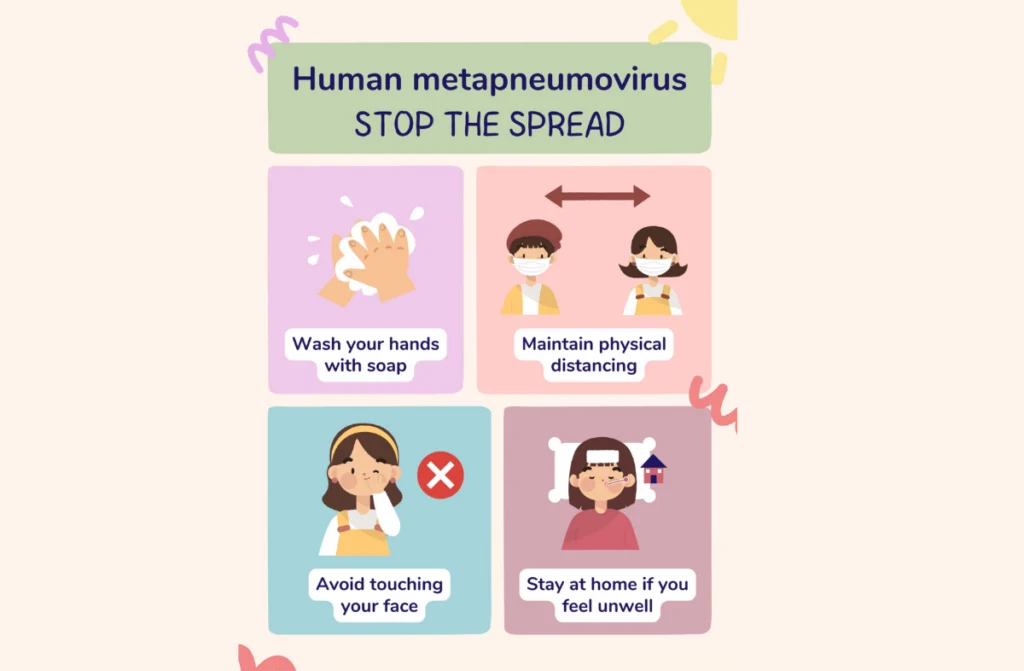Human metapneumovirus in kids is a pressing health concern that affects children across the globe, especially during colder months. This virus often goes unnoticed but can cause severe respiratory illnesses in children, particularly those with underlying health conditions. At CTS Speciality Hospital, we are committed to raising awareness about human metapneumovirus in kids and providing expert care to those affected. By understanding this virus, parents can take informed steps to ensure their child’s health and well-being.
What is Human Metapneumovirus (HMPV)?
Human metapneumovirus (HMPV) is a respiratory virus discovered in 2001. It is closely related to respiratory syncytial virus (RSV) and often causes similar respiratory illnesses. HMPV typically infects the upper and lower respiratory tracts, leading to symptoms ranging from mild cold-like issues to severe complications.
- Human metapneumovirus in kids is a common cause of respiratory illnesses in children under five years old.
- The virus spreads easily and can lead to serious complications, such as pneumonia or bronchitis, in vulnerable children.
- Most children will encounter HMPV at some point, but repeated infections can occur throughout life.

Common Symptoms of HMPV
Human metapneumovirus infections in children often mimic other respiratory illnesses, making it difficult to identify without specific diagnostic tests. Understanding the symptoms can help parents seek timely medical attention.
Symptoms in Adults
- Nasal congestion, mild cough, and a low-grade fever are the most common symptoms in adults.
- Adults with strong immune systems usually recover without medical intervention.
Symptoms in Kids
- Human metapneumovirus in kids frequently results in more severe symptoms, including persistent coughing, high fever, and wheezing.
- Severe infections can lead to difficulty breathing and reduced oxygen levels, especially in younger children.
Symptoms in Children: What to Watch For
The symptoms of human metapneumovirus infections in children can range from mild to severe. Here are the most common signs:
- Nasal Congestion and Runny Nose
These are often the first symptoms and are similar to a common cold. - Persistent Cough
The cough may start mild but can worsen, sometimes lasting for weeks. - Wheezing and Labored Breathing
Severe cases can lead to breathing difficulties, requiring immediate medical attention. - Fever and Fatigue
Fever is common and can be accompanied by extreme tiredness. - Loss of Appetite and Dehydration
Children may refuse food and drinks, increasing the risk of dehydration.
Recognizing these symptoms early is key to managing human metapneumovirus in kids effectively.
High-Risk Groups for HMPV
Certain groups of children are more vulnerable to severe human metapneumovirus infections. Parents of these children need to be especially vigilant:
- Infants and Toddlers: Young children, especially those under two years old, have immature immune systems, making them more susceptible.
- Premature Infants: Babies born prematurely often have underdeveloped lungs, increasing their risk of severe respiratory illnesses.
- Children with Chronic Conditions: Kids with asthma, heart disease, or other chronic health issues face higher risks.
- Immunocompromised Children: Those undergoing treatments like chemotherapy or with genetic immune deficiencies are particularly vulnerable.
How Does HMPV Spread?
Human metapneumovirus infections in children spread primarily through direct contact with an infected person or contaminated surfaces. Here’s how the virus spreads:
- Respiratory Droplets
When an infected person coughs or sneezes, virus-laden droplets are released into the air, which can be inhaled by others. - Direct Contact
Hugging, kissing, or sharing utensils with an infected person can transmit the virus. - Contaminated Surfaces
HMPV can survive on surfaces for hours, making it easy to contract through touch. Children are especially prone to touching contaminated objects and then their faces.
Understanding these modes of transmission can help prevent human metapneumovirus infections in children.
Human Metapneumovirus Infection in Hospitalized Children
Severe cases of human metapneumovirus in kids can lead to hospitalization, particularly in high-risk groups. At CTS Speciality Hospital, we frequently treat human metapneumovirus infection in hospitalized children with advanced care and monitoring.
- Severe Respiratory Distress
Hospitalized children often struggle with rapid or labored breathing and require oxygen support. - Secondary Infections
Conditions like pneumonia or ear infections can complicate HMPV cases. - Dehydration
Difficulty eating or drinking can result in dehydration, necessitating intravenous fluids.
The specialized pediatric care team at CTS Speciality Hospital ensures optimal outcomes for children hospitalized with severe HMPV.
Diagnosing Human Metapneumovirus
Accurate diagnosis of human metapneumovirus infections in children is critical for effective treatment. Here’s how the diagnosis is made:
- Nasal Swabs
A simple nasal swab can detect the presence of the virus in respiratory secretions. - Chest X-Rays
X-rays are used to identify complications such as pneumonia. - Blood Tests
These tests help rule out other infections and assess the child’s overall health.
Timely diagnosis is key to managing human metapneumovirus infection in hospitalized children.
Prevention of Human Metapneumovirus in Kids
Prevention is the best defense against human metapneumovirus in kids. Simple hygiene practices can significantly reduce the risk of infection.
- Frequent Handwashing
Teach children to wash their hands regularly with soap and water, especially after coughing or sneezing. - Disinfecting Surfaces
Clean commonly touched objects such as toys, doorknobs, and tables. - Avoiding Crowded Places
During peak seasons, limit exposure to crowded environments where the virus spreads easily. - Isolating Sick Individuals
Keep sick family members isolated to prevent spreading the virus to children.
These measures can effectively reduce the risk of human metapneumovirus infections in children.
Treatment Options for Human Metapneumovirus
Treatment for human metapneumovirus in kids focuses on relieving symptoms and supporting recovery. While no specific antiviral treatment exists, supportive care can make a significant difference.
- Managing Fever and Pain
Medications like acetaminophen or ibuprofen can help reduce fever and discomfort. - Hydration
Ensuring the child drinks plenty of fluids is essential to prevent dehydration. - Oxygen Therapy
Severe cases may require oxygen support to assist with breathing. - Monitoring for Complications
Secondary bacterial infections, such as pneumonia, may require antibiotics.
At CTS Speciality Hospital, we create personalized treatment plans tailored to the needs of each child, ensuring comprehensive care for human metapneumovirus infections in children.
Conclusion
Human metapneumovirus in kids is a serious condition that requires awareness and proactive care. By recognizing the symptoms early, understanding how the virus spreads, and taking preventive measures, parents can protect their children from this common respiratory illness. At CTS Speciality Hospital, we specialize in diagnosing and managing human metapneumovirus infection in hospitalized children, providing expert care to ensure the best outComes
